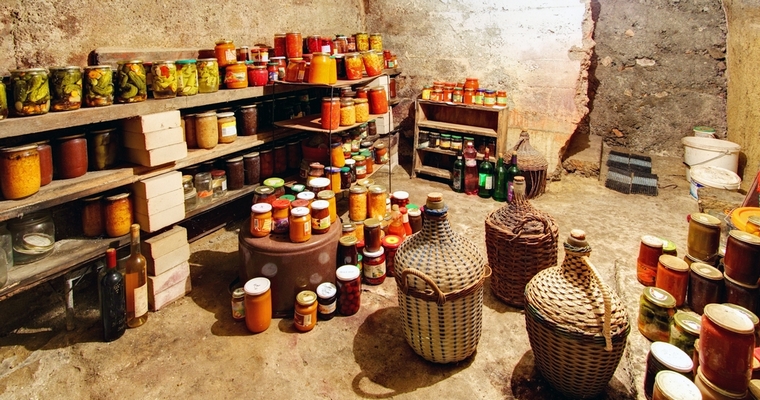Short introduction to preserving food. Describes the bacterial activity that causes food to spoil, and lists the 12 most common methods for preserving food.
Introduction
When you eliminate processed food from your diet and begin to cook everything from scratch, the number of raw ingredients you need to use increases. Even something as simple as mayonnaise involves replacing one shop-brought item with four. But this does not mean that you need to be a slave to a daily shop, stuck in an endless cycle of buying and preparing food. Previous generations did not have access to processed foods with extended shelf lives, and yet they were not solely reliant on fresh, seasonal food. They were able to preserve food so that it could be kept and enjoyed throughout the year, without the use of modern technology and chemical preservatives. So in order to replicate the diet of our ancestors, it is important to teach ourselves to store and preserve food in a natural way.
This are two real benefits to this approach. Firstly, it saves time. If you want to spend half as much time in the kitchen, simply make twice as much food and keep the leftovers for another meal. Batch cooking removes a lot of the stress and anxiety that can develop when you follow a restricted diet and do not want it to take over your life. Secondly, it saves money. There is no point paying a premium on fresh, local produce if it goes off and is wasted.
Humans have been preserving food for thousands of years, and have developed a range of methods to stop food from spoiling. In order to achieve this, we must find a way to stop the growth of the micro-organisms that naturally exist in fresh food. Left alone, these bacteria produce enzymes that break down food, causing it to smell and liquidise. If you can kill the bacteria, or stop them from reproducing, then you can stall the spoiling process. The bacterium that cause food to decay are living things. So, just like us, they need a hospitable environment in order to stay alive and reproduce.
Temperature:
Oxygen:
- canning
- cellaring
- vacuum packing
Water:
- drying
- pickling
- salting
- smoking
- sugar
Toxicity:
- fermentation
All you really need in your toolkit are cooling, freezing and canning. These are the simplest methods of preserving food, since they do not involve any specialist equipment or complicated procedures. They also keep food as close to the fresh state as possibly, unlike, say, drying which significantly alters the taste and texture. If, like me, you suffer from a digestive disorder, I would recommend adding fermentation to the mix, as this helps balance beneficial gut bacteria.
Other Articles in the Series:




